Our third week of excavation was blessed with good weather, although it got very cold by Saturday.
Excavations progressed in all of the various groups that were being investigated. Excavations in Galletas were largely completed this week as bedrock was reached in all excavations. The north building in Galletas had been placed directly atop a bedrock outcrop, using the bedrock to gain building height. The south building rested on fill – only because the plaza had to be raised in this location. The small eastern building was similarly placed directly on bedrock, but did produce a pit that contained three skulls. Also in Galletas the reservoir associated with the group was half-sectioned; as expected, the water containment area had a clay liner set over bedrock.
Excavations were also completed in Pan. The eastern building here could not be penetrated because of a huge tree, but excavations placed to the front and back of the building succeeded in finding two burials, three caches, and a collapsed and looted tomb. Again, the southern and northern buildings were barely above bedrock.
In Dulce, two excavations continued. The one into the southern building recovered a small heavy vase in the core of the building. The eastern excavation recovered finger caches from the front of the trench, uncovered a z-angle bowl from the building fill, and succeeded in getting into the collapsed tomb in the core of the building. The tomb was located directly beneath a shrine room. Excavation showed that a single individual with head to the south had been placed on a bench within the chamber; six vessels were placed immediately off the bench to the west along with 21 spindle whorls (including a jadeite and hematite spindle whorl as well as a limestone whorl that still had spondlus inlays). The vessels dated this tomb to the late part of the Early Classic Period. Perhaps the most surprising find was an intact bowl (that had been covered in dirt when the tomb collapsed) that had two fairly well preserved stucco cartouches showing the head of a high status individual.
In Bimbo, six excavations were ongoing with good progress made in all three eastern excavations. Capstones for a tomb were found within the core of the central eastern building; there was approximately 1.5 m of space beneath them. When they were lifted, a few vessel outlines could be seen in the southeastern portion of the chamber. With minimal excavation, many more vessels and layers of bone were uncovered in the southern part of the tomb, indicating that it will take some time to fully excavate this chamber. This tomb dates to the early and middle parts of the Late Classic Period.
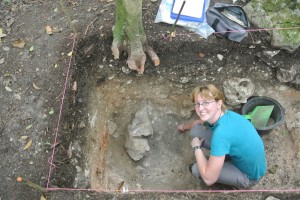
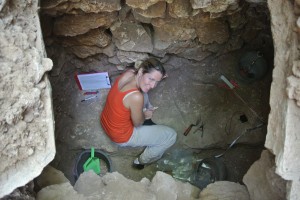
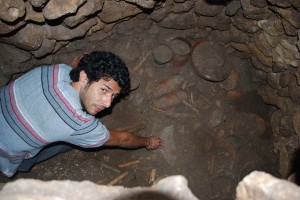
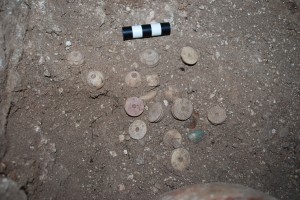
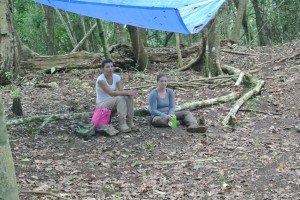
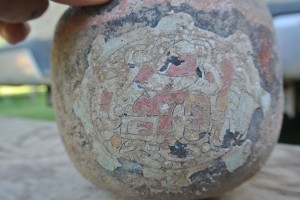
Juanita Duque, te amo, estas divina, espero que la este pasando super, aprendiendo y desapreniendo
te esperamos con los brazos abiertos para abrazarte cuando regreses y despedirte cuando partas a otras tierras en busca de aventuras.
Cher, looking exciting. I am getting a little anxious about the work.